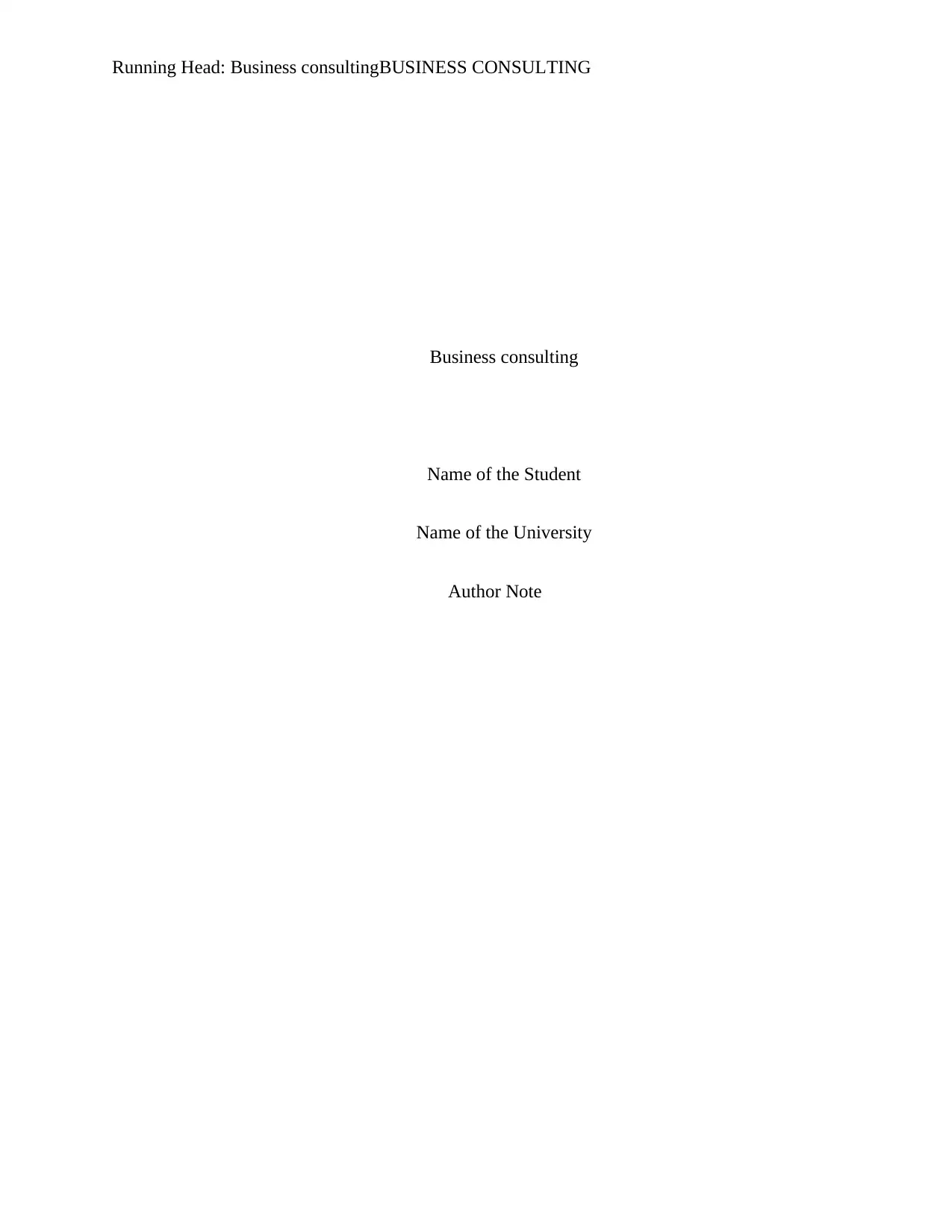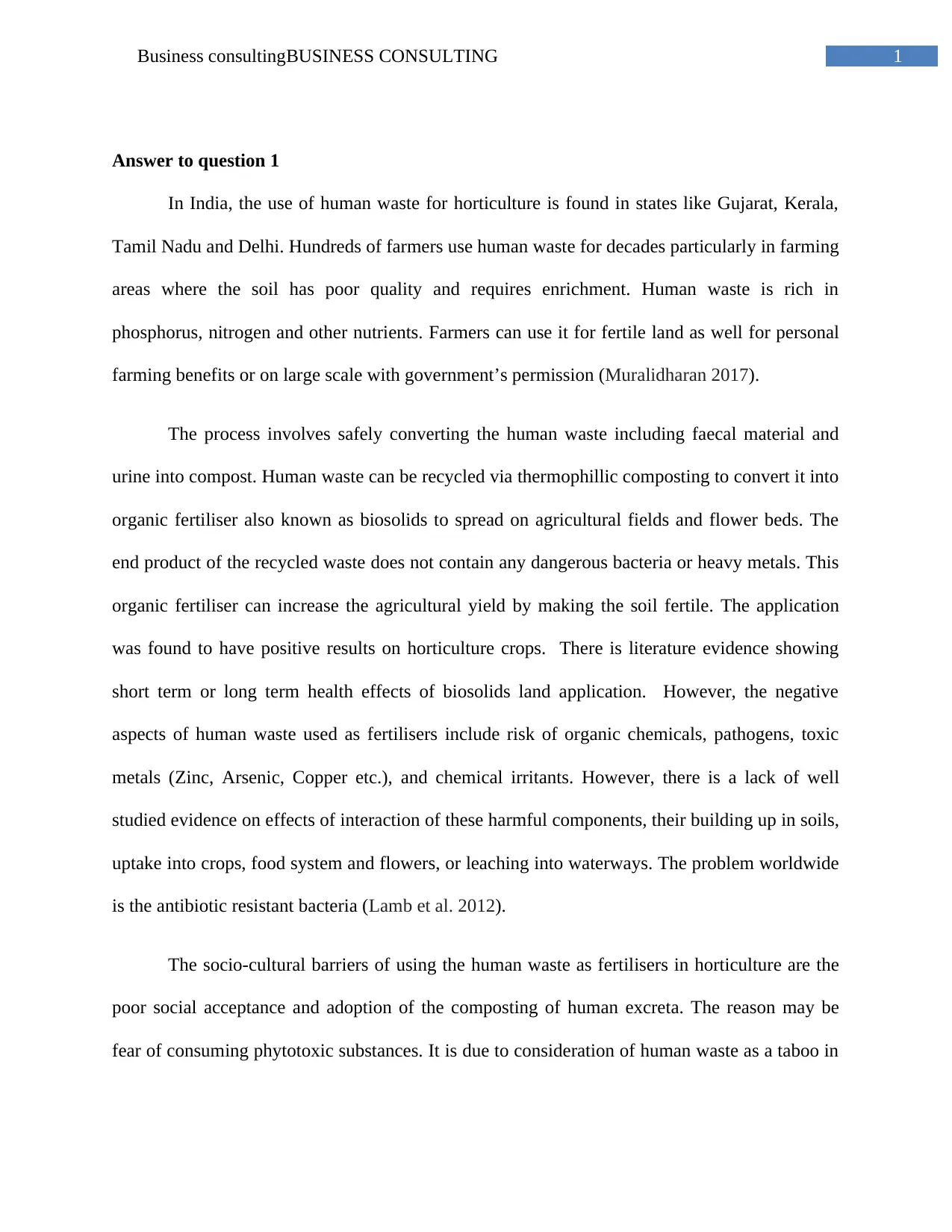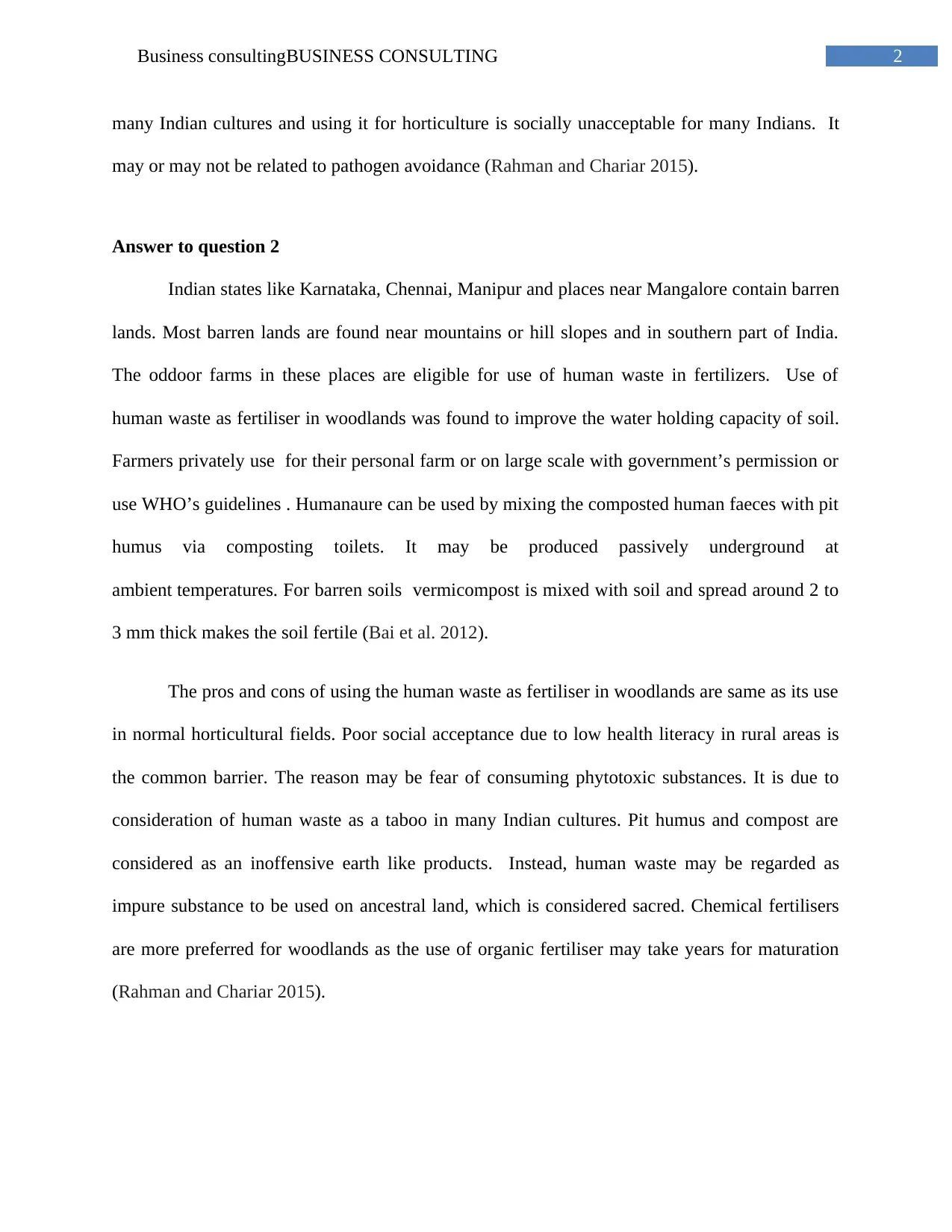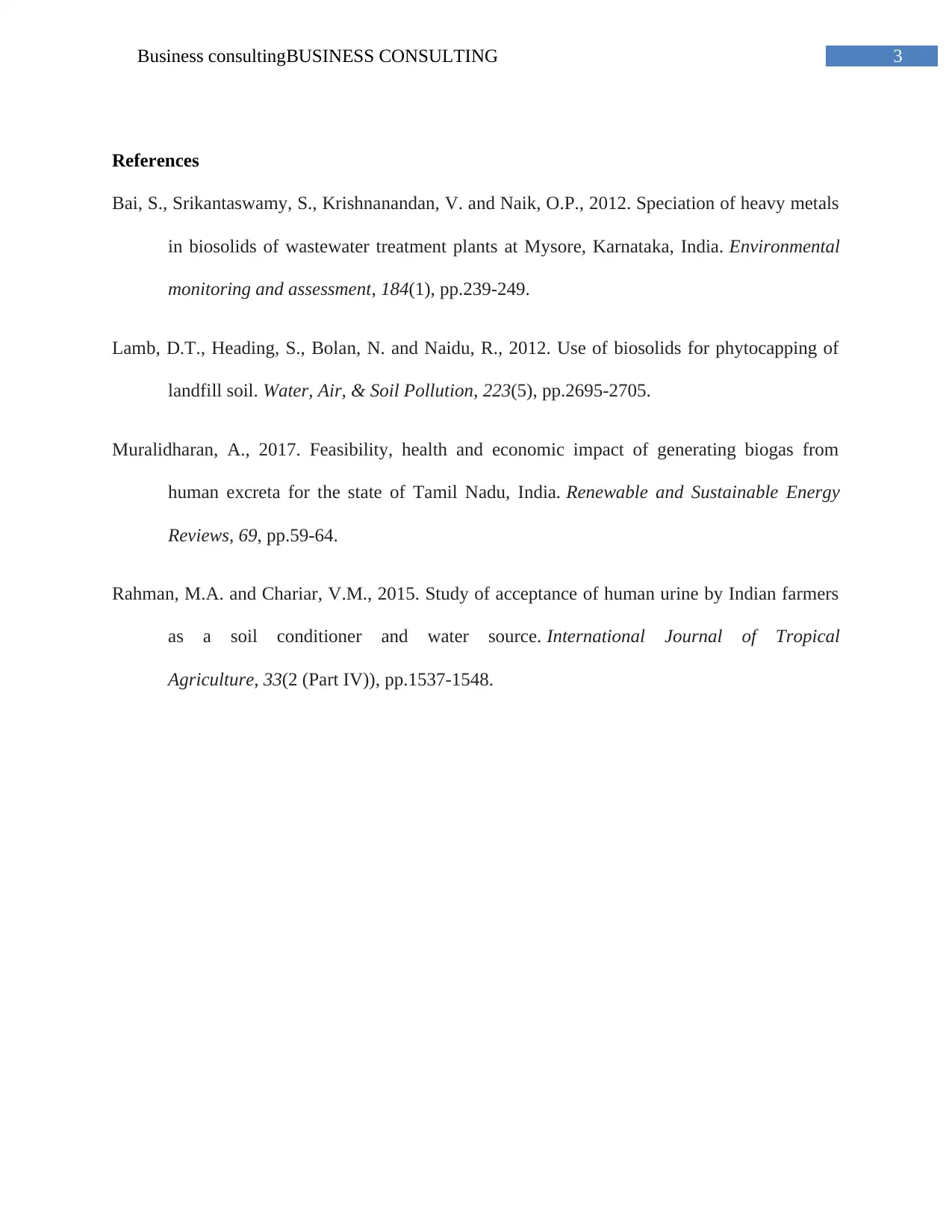Business Consulting: Human Waste Fertilizer in Indian Agriculture
VerifiedAdded on 2020/05/08
|4
|829
|51
Report
AI Summary
This business consulting report explores the use of human waste as fertilizer in Indian horticulture. It examines the practice in states like Gujarat, Kerala, Tamil Nadu, and Delhi, where farmers utilize human waste to enrich soil, particularly in areas with poor soil quality. The report details the process of converting human waste into compost, highlighting its rich nutrient content (phosphorus, nitrogen) and potential for increasing agricultural yield. It addresses the positive impacts on horticulture crops and the use of organic fertilizer (biosolids). The report also acknowledges the negative aspects, including potential risks from pathogens, toxic metals, and chemical irritants, along with the lack of comprehensive studies on their long-term effects. Socio-cultural barriers, such as poor social acceptance and the taboo associated with human waste in many Indian cultures, are discussed. The report further analyzes the application of human waste as fertilizer in barren lands, particularly in states like Karnataka and Manipur. It references the use of 'Humanaure' and vermicompost for soil fertility, along with the pros and cons of using human waste in woodlands, emphasizing the importance of health literacy and the preference for chemical fertilizers in certain contexts. The report concludes with references to supporting literature and research findings.
1 out of 4





![[object Object]](/_next/static/media/star-bottom.7253800d.svg)